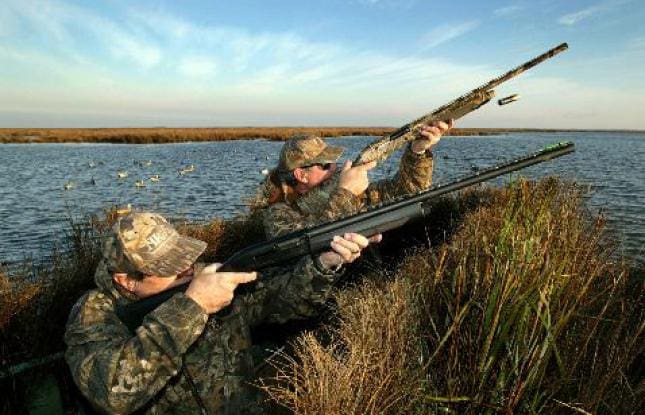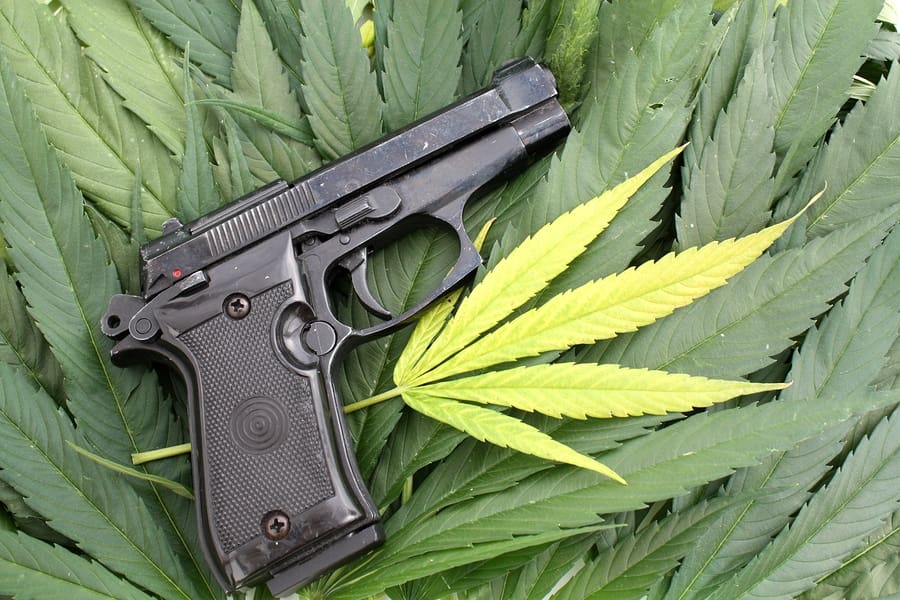How rice industry might be influencing duck hunting. When I first started reading this article, I thought it was about how well rice pairs with duck, leading to more duck hunting. Ironically, it’s about how rice drives away the main course. That’s the Buzz from americanpress.com:
“I talk to hunters every day and from them I’m finding out that the number of ducks in our area is just not what they used to be,” Buzzy Brunot (above) said. “I can remember shooting mallards in a pond where Memorial Hospital stands right now. And one of the area’s biggest rice mills was on the northwest corner of Sallier and Ryan streets.
Turns out Buzzy’s uniquely qualified to offer an explanation for LA’s great duck disappearance.
Buzzy Brunot was renowned as one of the area’s top fast-pitch softball players during those decades and is a member of the state Hall of Fame.
No, not that.
He was also a rice inspector for the federal government for 30 years and was often called to Washington D.C. and other areas in the USA for his expert opinion on anything dealing with the grain.
That, along with his many years as a hunter, he feels, qualifies him to offer an opinion.
“When I first started with the grain division (1954), the rice that farmers in the area were planting were short grain and medium grain,” he said. “Later, farmers found that they could get a better yield with long-grain rice.”
Rice facts ahead!
Statistics show that in the state in the 1980s, short and medium grains accounted for 65 percent of the rice grown in Louisiana while just two years ago long-grain rice made up 85 percent of the rice grown. Also, different varieties of the long-grain rice have been developed that gives a better yield and works better in the state’s climate. Louisiana is listed as the third-largest producer of rice in the USA.
And ducks’ dinner preference is . . .
Brunot said mallards, as well as other ducks, prefer the short- and medium-grain rice.
“The long-grain rice, when it is in the rough stage, has a hull on it that has a sharp point,” he said. “This point gets into the ducks’ craw (opening part of its digestive system) and sticks.
“Ducks don’t like that so they begin to eat other food.”
Like the food found in . . .
Brunot noted that Arkansas farmers have continued to plant short- and medium-grain rice, and therein lies his theory.
“I think that this is helping Arkansas keep the ducks up there because we’re just not getting near the number that we used to.”
Ducks prefer the food in its natural state [sic] rather than risking a meal in sportsman’s paradise. Who knew? Besides Buzzy.






I guess long grain rice isn’t all that it’s quacked up to be.
That was so bad, it was actually good!
So who is going to flip the “bill” to get the ducks back?
So, can we say that the rice industry have made ducks gone a fowl?
With that many competing interests involved, this won’t be duck soup to solve.
sweet, bring some much needed revenue to Arkansas
He will leave the bill for you.
A duck walks into a pharmacy, grabs some chapstick and starts to leave.
The cashier says, “Hey, aren’t you going to pay for that?”
The duck days, “put it on my bill”
With the With the warm weather we’ve had this year the big flights never came in, had some good shoots but nothing like the cold weather years. If you want to keep your barrels hot try the Stuttgart Arkansas hunts.They seem to really pull them in … I worked for a hunting club owner for fifteen years, no rice in this State , corn, milo, soybeans and Japanese millet was what we used.
Maybe the ducks should fly to Vietnam,lots of rice over there
someone ought to make a law telling the ducks what they can and cannot do…
“Ducks don’t like that so they begin to eat other food.”
I think that may be related to this:
“… farmers found that they could get a better yield with long-grain rice.”
Is much of the better yield due to fewer pests (i.e. ducks), or is it supposed to actually produce more in that climate, or both?
I’ve never heard any complaints about ducks eating crops. I have heard complaints about deer, but never ducks.
Ducks migrate to these areas after the harvest of rice has been completed. The fields are flooded for erosion control, weed control, and to attract ducks. The ducks eat the waste grain that was missed during harvest.
The selection of which variety to plant depends on yield (due to soil, climate) as well as input costs (herbicides, insecticides, fungicides, fertilizers) and marketability.
“The long-grain rice, when it is in the rough stage, has a hull on it that has a sharp point,” he said. “This point gets into the ducks’ craw (opening part of its digestive system) and sticks.”
Learn me something new, where the term “stuck in your craw’ came from.
And Tom in Oregon?
You neglected to add this to your comment :
http://instantrimshot.com/index.php?sound=rimshot&play=true
(“Put it on my bill.” *snicker*…)
A deer, a skunk and a giraffe go out drinking one night.
After last call, the bartender brings them the check.
The deer says, “I can’t pay this. I don’t have any doe, not even a buck”.
The skunk says, “Don’t look at me, I haven’t got a scent”.
The giraffe says, “Oh well, I guess the highballs are on me”.
Ba-dum-tsh!
Lol, your on a role…..A farmers out by his barn, whooomph a duck hits the side. A duck hunter walks over to pick it up. Farmer says” my property, my duck” , hunter “I shot it my duck” farmer” we will settle this the old fashioned way, kick each other in the nuts, who ever gives up can have the duck” hunter” Okay” farmer says ‘I get first kick” kablam size 12 rubber boot right to the nuts, “” ouughoooh oww okay my turn” , farmer says nah you can have the duck.
sic /sik/
adverb
used in brackets after a copied or quoted word that appears odd or erroneous to show that the word is quoted exactly as it stands in the original.
Sic goes in quotes, not your own odd or erroneous usage.
I’ma gonna “sic” mah dawg on yee. …
This is seven perfect examples of when to use sic. Thank you.
“I’ma [sic] gonna [sic] “sic” [sic] mah [sic] dawg [sic] on yee [sic]. … [sic]”
The sentence should have been “I’m going to sic my dog on you.” I’m impressed. If only you had gotten on wrong, it would have been a perfectly wrong/odd usage sentence.
Arkansas. Wal-Mart, chickens, rice but ducks? Never knew us to have a lack of ducks.
or freaking geese. see those damn things constantly. remember the burns park thing? lol
Comments are closed.